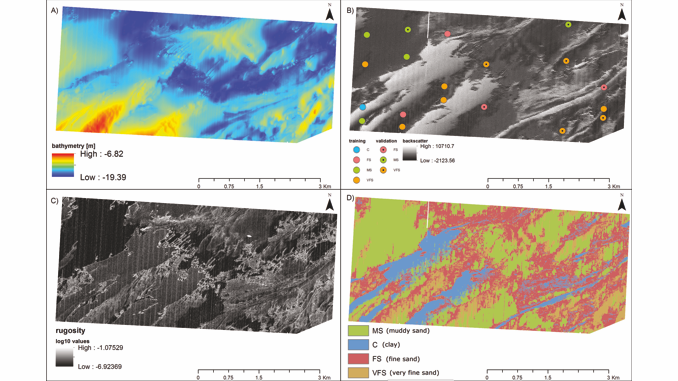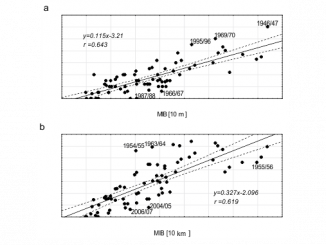
Paper category: Original research paper
Corresponding author: Łukasz Janowski (ocelj@ug.edu.pl)
DOI: 10.1515/ohs-2018-0024
Received: October 4, 2017
Accepted: January 16, 2018
Full text: here
Citation (APA style):
Abstract
Seafloor mapping is a fast developing multidisciplinary branch of oceanology that combines geophysics, geostatistics, sedimentology and ecology. One of its objectives is to isolate distinct seabed features in a repeatable, fast and objective way, taking into consideration multibeam echosounder (MBES) bathymetry and backscatter data. A large-scale acoustic survey was conducted by the Maritime Institute in Gdańsk in 2010 using Reson 8125 MBES. The dataset covered over 20 km2 of a shallow seabed area (depth of up to 22 m) in the Polish Exclusive Economic Zone within the Southern Baltic. Determination of sediments was possible based on ground-truth grab samples acquired during the MBES survey. Four classes of sediments were recognized as muddy sand, very fine sand, fine sand and clay. The backscatter mosaic created using the Angular Variable Gain (AVG) empirical method was the primary contribution to the image processing method used in this study. The use of the Object-Based Image Analysis (OBIA) and the Classification and Regression Trees (CART) classifier makes it possible to isolate the backscatter image with 87.5% overall and 81.0% Kappa accuracy. The obtained results confirm the possibility of creating reliable maps of the seafloor based on MBES measurements. Once developed, the OBIA workflow can be applied to other spatial and temporal scenes.


Bądź pierwszy, który skomentuje ten wpis